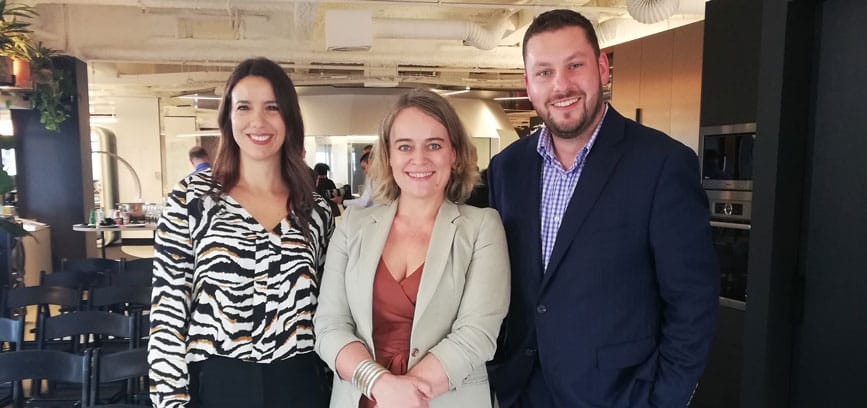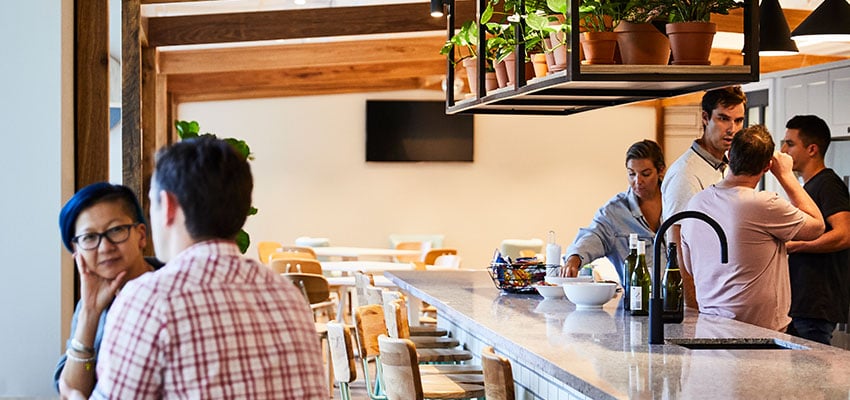How activity-based working is impacting workplace wellness
Did you know mental illness is the leading cause of sickness absence and long-term work incapacity in Australia? Given that our work plays such a significant role in our lives—we do spend most of our working weekday hours there—it’s crucial we acknowledge its impact on our mental health and wellbeing just as much as we do on the physical side. Aside from reducing absenteeism, focusing on workplace wellness helps employees to feel healthy and valued at work, enabling them to perform their best. Additionally, a healthier workspace attracts new talent and leads to greater retention.
In recent years, there has been significant talk about the benefits of workplace design, which includes activity-based working (ABW) or agile working. But in this post, we will specifically be exploring how ABW can affect employee wellbeing—both mentally and physically. Let’s start with a definition.
What is activity-based working?
Activity-based working understands that employees undertake a variety of activities in their everyday work and therefore require different work settings, supported by the appropriate technology, to perform these tasks efficiently and productively. ABW is about creating spaces to meet the needs of individuals and teams, with an emphasis on empowering employees to make decisions which allow them to work at their full potential.
The wellness benefits of activity-based working
There are many wellbeing advantages of a workplace designed with activity-based working principles:
Sense of agency = happiness
The flexibility of an ABW workspace allows individual working styles to be taken into consideration. Employees are able to choose the space best suited to both their task, their style of working and their mood. Naturally, this licence to choose is linked to a feeling of agency or control for the employee, which is essential to a workplace focused on employee wellbeing.
Work/life balance
A key pillar of ABW is flexibility for employees. They are enabled to choose where and when they work according to their individual working style, preferences, patterns and productivity cadences. As more and more employees prioritise a healthy work/life balance, this flexibility is both attractive and significant to their overall wellbeing.
Healthy eating behaviours
A feature of many ABW workplaces is a communal break out area or eating hub for employees to dine and socialise with colleagues. Paired with a policy of discouraging eating at one’s desk, studies have found ABW encourages healthier eating and increased movement.
Collaboration and networking
Businesses and individuals increasingly understand the significance of interaction and collaboration between employees, and are looking for ways to facilitate strong connections between coworkers. ABW supports employees to work collaboratively through enhanced opportunities for formal and informal knowledge transfer and networking. And while collaboration is good for business, it’s also important for employee wellbeing. Research shows teamwork makes people smarter, more creative, and more successful—and who doesn’t want that?
Aside from the business and productivity benefits of working in a team, having friends at work boosts mood and morale, providing emotional and psychological support to ensure employees are resilient and ready for the challenges of the workplace.
Work the way that works
As we’ve already mentioned, a trademark of activity-based working is the flexibility for employees to choose when and where they get their work done. Unlike traditional one-size-fits-all workplaces, an ABW approach takes into account different personalities, habits, associations, styles and patterns of working. This is especially essential for supporting mental health in what can often be a challenging and stressful space.
An attractive workplace
While salary and benefits aren’t off the radar for younger generations, it does appear that millennials prioritise things like work/life balance and a sense of purpose or meaning in their work. With this focus on workplace wellness, it’s clear that a workspace with variations and choice in the work environment is an attractive option for the next generation of workers.
The wellness downfalls of activity-based working
Installing hot desks or knocking down cubicle walls is not enough to reap the workplace wellness benefits of ABW. This approach requires careful consideration and customisation to ensure that a company’s culture and style of working is reflected. It requires the support and buy-in of all levels of the business—from the C-Suite to the student doing work experience.
Important elements to consider when creating a fluid workplace design include:
- quiet spaces where employees can work distraction-free when required;
- making employees feel connected and ‘at home’ even without a permanent desk, such as encouraging opportunities for social interactions.
The bottom line
No matter the workplace strategy, there will be impacts on workforce wellness. However, designing a workplace that meets your business’ future vision and requirements, instead of focusing on what’s cool and trendy, will always result in better outcomes. ABW is a flexible and dynamic style of working which will support your employees to do their best work and encourage a culture of workplace wellness.
Key takeaways about activity-based working:
- One size does not fit all and operating as if it does will be detrimental to your employees’ wellbeing.
- One in, all in. Employees need to feel supported in their working practices, otherwise they can easily sink back into old habits.
- ABW offers flexibility and support which encourages a healthier workforce, both mentally and physically.
- ABW can offer a highly productive and healthy office environment when aligned with the overall business culture.
- ABW as a workplace strategy will only succeed if it meets your business needs.
Want more? In this deep-dive white paper, Axiom explores how workplace design influences digital transformation across the key areas of talent, diversity, innovation and technology. We look at the steps to achieving your own digital transformation and we emphasise the importance of having an ongoing workplace strategy as you move forward.








